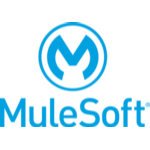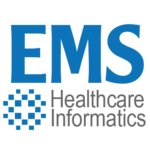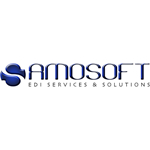List of Best Electronic Data Interchange Software
Showing 10 of 35 productsTrueCommerce EDI, a powerful software solution that simplifies the exchange of electronic documents between trading partners. With seamless integration and user-friendly features, TrueCommerce EDI streamlines business processes and increases efficien...Read TrueCommerce EDI Reviews
Cleo is more than just a name - its a powerful software designed to streamline and simplify your business operations. With its advanced features and user-friendly interface, Cleo empowers businesses to achieve efficiency and productivity like never b...Read Cleo Reviews
Dell Boomi is a highly versatile and innovative software that connects various business applications, systems, and processes, making it easier for organizations to automate and streamline their operations. With its cloud-based integration platform, D...Read Dell Boomi Reviews
Adeptia Connect is a versatile, user-friendly integration software that streamlines business operations and optimizes data flow. With its intuitive interface and robust capabilities, Adeptia Connect simplifies complex processes and enables seamless c...Read Adeptia Connect Reviews
GoAnywhere MFT is a and versatile file transfer solution designed to securely is a ly manage the movement of data within your organization. With its user-friendly interface and robust features, GoAnywhere MFT simplifies and streamlines your file tran...Read GoAnywhere MFT Reviews
Anypoint by MuleSoft a powerful and innovative integration platform that enables seamless connectivity between applications, data, and devices. With its advanced capabilities, Anypoint simplifies the process of building and managing integrations, all...Read Anypoint by MuleSoft Reviews
EDI Power Reader is a software designed to simplify and streamline the process of data exchange between businesses. With its intuitive interface features, it allows for efficient management of EDI documents, ensuring seamless communication and boosti...Read EDI Power Reader Reviews
XEDI is a software that streamlines and simplifies the complex world of data exchange. With its sleek interface, XEDI empowers businesses of all sizes to easily manage and exchange data with their partners. Say goodbye to tedious manual processes and...Read XEDI Reviews
Amosoft is a software solution designed to streamline your business operations and simplify communication between various systems. With its user-friendly interface features, Amosoft offers a seamless integration process for all your business needs. E...Read Amosoft Reviews
Accomplish EDI revolutionizes the way businesses approach electronic data interchange with its efficient and user-friendly platform. This revolutionary software simplifies the complex process of exchanging electronic documents, allowing businesses to...Read Accomplish EDI Reviews
- What Is Electronic Data Interchange Software?
- Top Reasons Why Businesses Need Electronic Data Interchange Software?
- What Are the Top Key Features of Electronic Data Interchange Software?
- What Are the Top Benefits of Electronic Data Interchange Software?
- What Are the Steps to Choose the Right Electronic Data Interchange Software?
- What Are the Types of Electronic Data Interchange Software for Different Industries?
- What Are the Technology Trends for Best Electronic Data Interchange Software?
- What Are the Deployment Options for Electronic Data Interchange Software?
What Is Electronic Data Interchange Software?
Electronic data interchange (EDI) software enables businesses to electronically exchange business documents. Documents such as business orders, invoices, and shipping notices can be exchanged in a common structured format that all trading partners accept using EDI.
EDI system reduces the need for businesses to manually re-key data from paper, email, and other formats, lowering data entry costs and boosting accuracy. Organisations can decrease costs while still keeping their information secure and allowing for quicker and faster transactions by transforming common business papers into such a standardised format.
EDI software provides the capabilities needed to securely handle these documents, allowing organisations to initiate, monitor, and track EDI transactions, speeding up business operations and boosting data integrity and quality. Furthermore, EDI solutions give firms with an auditable trail and help them comply with rules like Sarbanes-Oxley and HIPAA.
Top Reasons Why Businesses Need Electronic Data Interchange Software?
1. EDI software enables efficient and accurate data exchange between commercial partners.
2. Increased data accuracy as a result of automation and the constant use of structured data.
3. It automates the purchasing, billing, and payment processes.
4. Ensures EDI standards compliance.
5. Cuts down on order processing, lead time, and delivery expenses.
6. Simplifies accounting processes and ensures invoice payment on time.
7. Automates inventory management operations and gives real-time stock level insight.
8. Facilitates conventional corporate processes and assures adherence to regulatory requirements.
9. Allows for speedier order-to-cash cycles.
10. Assists in reducing human error and labor expenses associated with manual data entry.
11. Improves business partner communication and collaboration.
12. Aids in the elimination of paper-based procedures and documentation.
13. Improves customer service by giving up-to-date and correct facts.
14. Provides improved shipment and product tracking.
15. Aids in forecasting demand, market analysis, and cross-departmental collaboration.
What Are the Top Key Features of Electronic Data Interchange Software?
1. Improved speed and accuracy: Electronic data interchange EDI software provides for faster and more accurate digital data transmitting and receiving. It employs efficient processing and arranges data into complete reports for user convenience.
2. Automation: The primary characteristic of the EDI system is automation, which reduces the need for manual human intervention in the data exchange process, making it faster and more accurate.
3. Scalability: The EDI platform may be scaled to meet the needs of the business. Users have the freedom to upgrade the program with new features at any time as their business grows.
4. Compatibility: The best electronic data interchange software is compatible with a wide range of different systems, allowing organisations to exchange data with their partners without the need for software updates or user training.
5. Security: Electronic data interchange software ensures a safe and secure data exchange environment. It uses powerful encryption techniques to ensure the security of documents.
6. Lower Costs: By automating the entire process, EDI software lowers the costs associated with manual data interchange. It also decreases the possibility of errors, saving both resources and time.
7. Improved Collaboration: Companies may celebrate their relationships with partners and customers by embracing EDI software, which makes data exchange easier and simpler due to its centralised structure. This makes data collaboration and sharing easier.
What Are the Top Benefits of Electronic Data Interchange Software?
1. Cost savings: By replacing time-consuming paper-based operations, Electronic Data Interchange software can help organisations save money on human data entry. There is no need to pay for air mail, postage, or other types of physical delivery.
2. Increased efficiency: EDI platform aids in the automation of document exchange procedures, minimising errors caused by human data entry and boosting accuracy. This improves the flow of information, allowing businesses to obtain the data they require when they require it.
3. Improved customer satisfaction: By minimising wait times and delays, EDI system improves order fulfilment accuracy and speed, resulting in higher customer satisfaction.
4. Reduced risk of data loss: Because EDI data is kept electronically, it is less susceptible to errors than paper or manual data entry. This lowers the possibility of data loss due to human error.
5. Model compliance: EDI system promote business-to-business communication, assisting companies in remaining in compliance with industry laws.
6. Easier collaboration: Because EDI software interacts with existing systems, firms may communicate and share data more easily.
What Are the Steps to Choose the Right Electronic Data Interchange Software?
1. Identify your organization's business goals and objectives: Before choosing an EDI software solution, it is critical to understand how your business operates and how electronic data interchange (EDI) can assist you in meeting those objectives.
2. Research potential solutions: Conduct research to decide which EDI software will best meet the needs of your organisation. Consider aspects such as cost, support, scalability, and security.
3. Determine system requirements: Analyse and clearly define the EDI system's specific requirements, such as transaction volume, sophistication level, interface compatibility, and data structure integration.
4. Consider integration options: such as cloud-based solutions, hosted solutions, and classic EDI gateways.
5. Evaluate solutions: Select an EDI tool and compare it to your system needs. Ensure that all of your company's requirements are met.
6. Pilot test: Use a pilot project to test the solution and ensure that the EDI software is appropriate for your organisation.
7. Final implementation: After testing the solution and ensuring that it meets all requirements, it is time to fully install the EDI software solution.
What Are the Types of Electronic Data Interchange Software for Different Industries?
There are several types of Electronic Data Interchange software available for use in different industries. These include:
1. Full-Service EDI: This form of EDI software is often employed by large organisations with high transaction volumes. This software enables enterprises and suppliers to exchange data in a timely and dependable manner. It is most commonly used in conjunction with a Warehouse Management System (WMS), although it can also be utilised for other types of EDI exchanges.
2. Point-to-Point EDI: This sort of EDI system is intended for smaller businesses that only need to send and receive limited amounts of data. It allows for the simple creation and management of EDI documents and is generally coupled with a Customer Relationship Management (CRM) system.
3. Web EDI: This sort of EDI software connects firms' on-premises systems with trading partners via the internet. It is the most cost-effective alternative for smaller businesses, and it is frequently combined with a web-based shopping cart or an invoicing system.
4. Cloud-Based EDI: With cloud-based EDI software, users can access EDI documents from any place with an internet connection. Because of its low cost and adaptability, this form of software is becoming increasingly popular among small and medium-sized organisations.
Whatever form of EDI software is chosen, it is critical that the systems are well-documented in order to ensure compliance, security, and smoother workflows in an organisation.
What Are the Technology Trends for Best Electronic Data Interchange Software?
1. Cloud-Based Solutions: Because of their scalability, flexibility, and low cost, cloud solutions for the best electronic data interchange software are becoming increasingly popular. Furthermore, cloud-based EDI software is more secure and compliant than on-premises systems.
2. Automated Processing and Status Tracking: Enterprises can improve their organizational operations by automating the processing and tracking of EDI documents. Process automation and tracking statuses allow them to be more efficient and productive.
3. Mobile Applications: Users can access and send EDI documents from anywhere and at any time using mobile applications. This enables businesses to streamline and improve the efficiency of their procedures.
4. Integration with Supply Chain Platforms: Many EDI software systems are now connected with supply chain platforms, allowing customers to manage their supply chain activities from a single centralized location.
5. Document Validation and Verification: Document validation and verification are becoming more significant since they help to assure the accuracy of EDI tool before they are sent.
6. Security: As cybercrime becomes more prevalent, EDI software is now focusing on improving security. Authentication, encryption, two-factor authentication, and secure hosting services are examples of security features.
What Are the Deployment Options for Electronic Data Interchange Software?
Electronic Data Interchange Software deployment choices vary based on the software. On-premise installation or a self-hosted solution is a frequent EDI software deployment option. This means that the programme is installed and controlled inside the context of the user.
This method allows the user to control their EDI system in-house, assuring data confidentiality and privacy. Cloud-based EDI solutions are becoming more popular in addition to on-premises deployment. This approach takes use of the cloud's scalability and allows customers to instantly access their EDI system without the need to install or maintain hardware or software.
Furthermore, because the vendor manages the cloud-based EDI software, users may benefit from enterprise-grade security solutions. Finally, the optimum EDI platform deployment choice will be determined by the user's individual objectives and goals.
Organisations should assess the different benefits and drawbacks of each option to determine the optimal solution for their EDI requirements.










